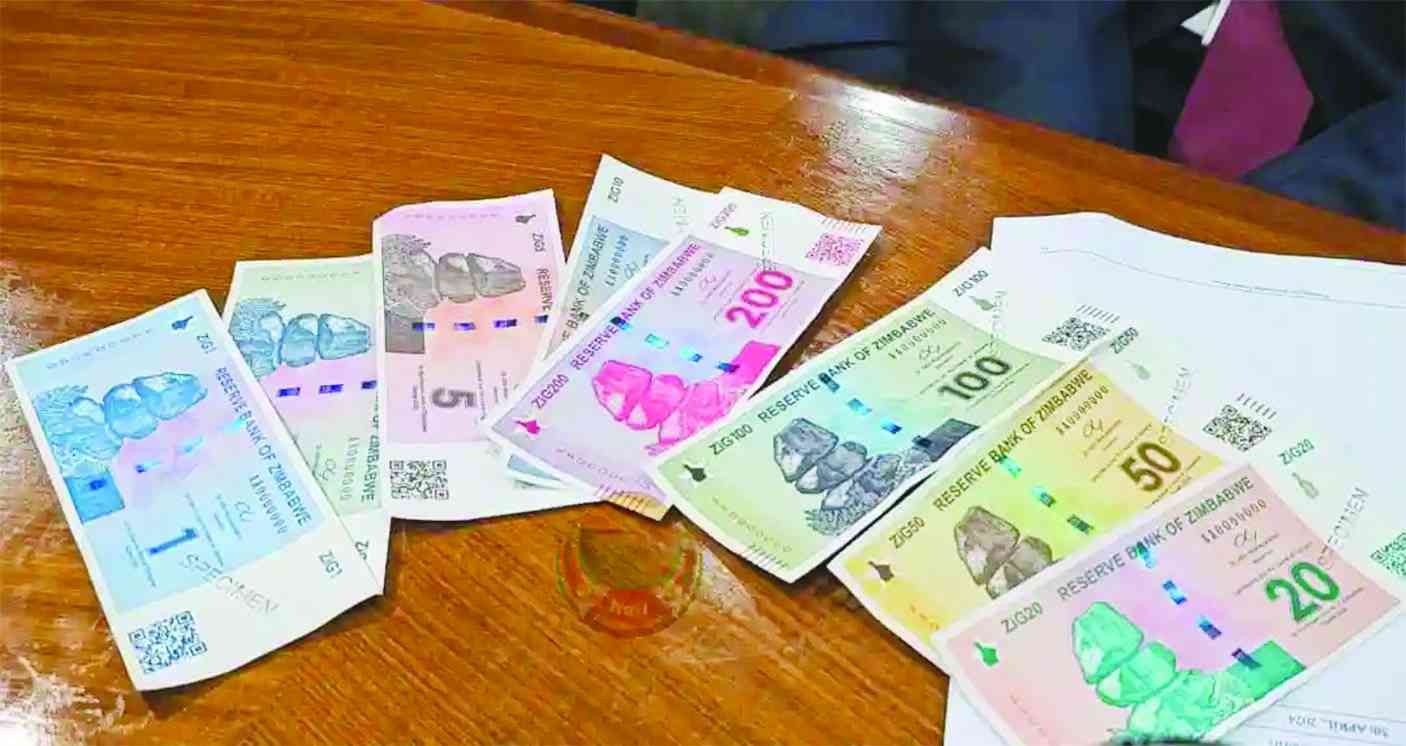
ZIMBABWE’S economy has suffered immensely since 2008, when inflation exceeded a million percent.
Since then, the government has made six attempts to adopt a local currency, with the latest coming in April 2024 through the ZiG. The ZiG is backed by a combination of foreign currency reserves, gold and other precious metals worth a combined US$285 million (more than R5 billion).
Since its introduction, the ZiG has eased Zimbabwe’s inflationary pressures, performed significantly better against the dollar in comparison to its predecessor, the Zimbabwe dollar, and has been lauded by local bankers and the International Monetary Fund for providing economic stability.
A tough road ahead
On the back of this optimism, the government officially confirmed on August 6 that its cabinet had approved a roadmap to adopt the ZiG as the sole currency by 2030, though details of this will be provided in due course by Finance minister Mthuli Ncube.
While the government is optimistic about the stability of the ZiG, there are several challenges that will probably hinder the government’s plans to implement a single currency system within the next six years.
Zimbabwe is currently heavily reliant on the US dollar (USD) as the main denominating currency in the economy.
Statistics from the Reserve Bank of Zimbabwe at the beginning of August indicate that 70% of all transactions in the economy are denominated in USD — although this is down from 85% when the ZiG was introduced in April.
- ‘Inflation could shoot to 700% by April next year’
- New perspectives: Inflation control critical for economic growth
- Inflation spike: Why interest rates aren’t the answer
- Village Rhapsody: Govt must ensure that devolution works
Keep Reading
Additionally, the currency is undermined by the same factors that helped to undermine previous attempts to re-establish a sole currency. These include a lack of confidence in the banking sector and the local economy, as well as the large scale of the unregulated informal economy, which is arguably the most significant issue for the government to resolve.
Informal economy conundrum
Decades of inflation pressures, driven by fiscal mismanagement and poor governance policies, have made the informal economy Zimbabwe’s preferred economic method.
It is cash-based and relies heavily on the US dollar. It has also become the best way for ordinary Zimbabweans to survive, with approximately 80% of the economy being classified as informal and bypassing government regulations and taxes.
This undermines the government’s ability to collect tax revenues and contributes to constraints in its ability to service its debt and provide basic services.
The dominance of the informal economy can be illustrated by the fact that most Zimbabweans, rather than shopping at formal retail stores such as Pick n Pay and OK, buy their groceries from rows of minivans parked on the street opposite the stores.
These minivans are packed full of products smuggled in from South Africa, which are sold for a fraction of the price of the larger grocers.
Even for local suppliers, the volatility of the currency makes it risky to sell to the formal sector. A Zimbabwean farmer based in the capital Harare advised us that any meat sold to Pick n Pay would be on 30-day payment terms and in local currency, which meant the value could drop substantially by the time he received payment.
This, in turn, caused inflated pricing for the larger retail stores. Meanwhile, if he sold the meat to informal traders, the price would be in USD and was paid immediately.
These examples illustrate the core problem plaguing the local currency: for the majority of citizens, the informal market has simply become the easier and more convenient means of conducting business.
The ZiG is also lagging behind in terms of circulation in the economy. More than four months after the currency was introduced, it is common for many Zimbabweans (particularly those not employed by the government) to have never even seen a ZiG bank note.
Unfair trade practices
The government has indicated that it plans to increase penalties against those involved in “unjust price hikes, manipulation of the ZiG, smuggling, and all forms of unfair trade practices”.
While such plans are indicative of the government’s determination to tighten regulations against the informal market and increase the use of the ZiG in the economy, it remains unlikely that the plans will successfully penalise the 80% of the population that survives through the informal economy.
The government has yet to provide any details of its roadmap towards de-dollarising. Meanwhile, formal businesses in Zimbabwe will continue to conduct most of their financial transactions in USD.
Overall, the ZiG’s potential impact looks weak, neither deterring the use of foreign currency in the informal economy nor eroding the USD’s influence on the formal economy.
The government’s use of penalties to force the ZiG on Zimbabweans will probably backfire, instead increasing the use of the informal economy and potentially causing larger, tax-paying formal businesses to exit the country.
The governing Zimbabwe African National Union Patriotic Front (Zanu PF) is also unlikely to completely ban the USD, which its senior members still covet and need to keep the mining sector — which is not conducted in ZiG — afloat.
While the ZiG has remained stable, the increasing scale and influence of the informal economy will hinder the government’s long-term plan to abolish the use of other currencies.
Instead of using sticks to push the ZiG, the government should instead think about carrots to increase confidence in Zimbabwe’s financial system and enable the government to implement regulations that can enable it to generate sufficient ZiG-denominated tax revenue and support economic growth. — Daily Maverick.
- Moyo is an analyst with Control Risks.










